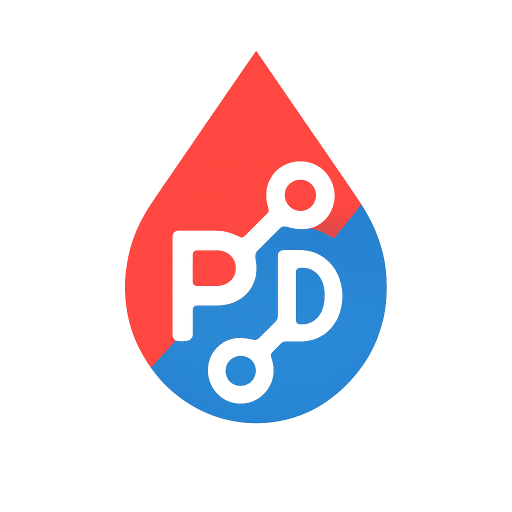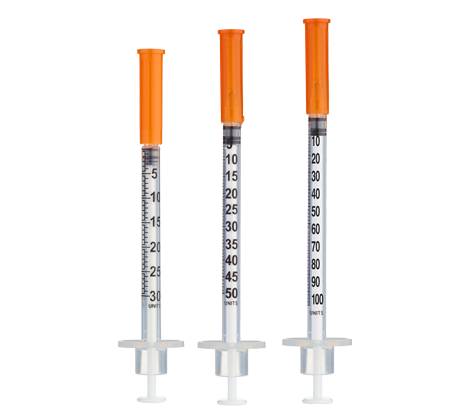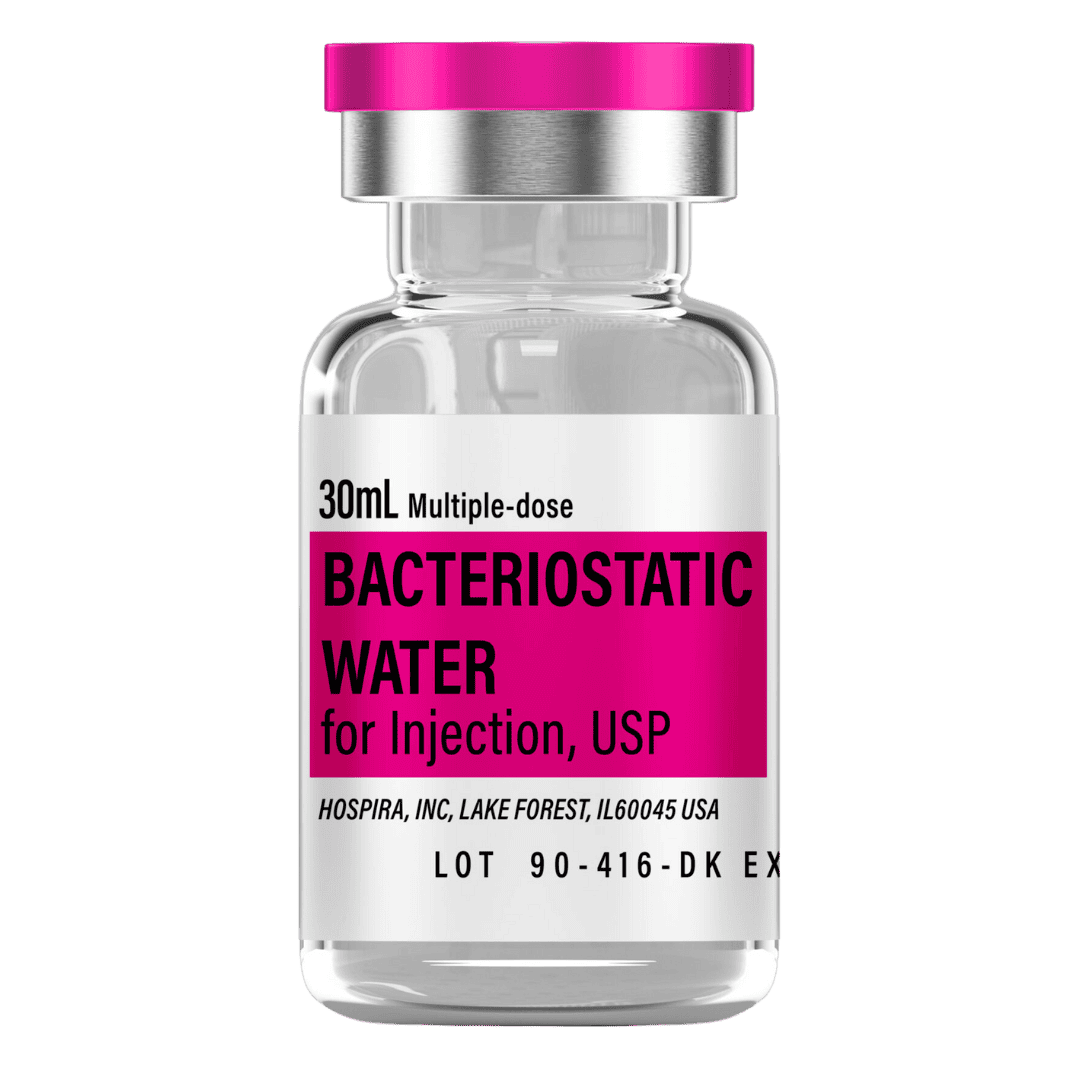MGF (5mg Vial) Dosage Protocol
Quickstart Highlights
MGF 5mg dosage protocol is commonly used to support muscle repair and promote localized growth through targeted, research-based injection schedules.
- Typical injections range from 150–200 mcg each
- Administered 2–3 times per week for muscle support
- Reconstitute with up to 3 mL for practical syringe measurements
- Store lyophilized in the freezer; reconstituted in the refrigerator

Dosing & Reconstitution Guide
Educational guide for reconstitution and dosing protocol
Standard / Gradual Approach (3 mL = ~1667 mcg/mL)
| Weeks | Per-Injection Dosage | Units (per injection) |
|---|---|---|
| 1–8 | 150 mcg (0.15 mg) | ~9 units (2x weekly) |
Reconstitute with 3 mL of bacteriostatic water for a concentration of approximately 1667 mcg per mL. Each 0.09 mL (9 units) delivers ~150 mcg.
If measuring 9 units is too low for your syringe, consider smaller-capacity insulin syringes for precision.
- Draw 3.0 mL of bacteriostatic water into a sterile syringe.
- Inject the water slowly along the vial wall to minimize foam.
- Gently swirl the vial—avoid vigorous shaking.
- Store the reconstituted solution at 2–8 °C (refrigerator), protected from light.
Advanced / Aggressive Approach (3 mL = ~1667 mcg/mL)
| Weeks | Per-Injection Dosage | Units (per injection) |
|---|---|---|
| 1–8 | 200 mcg (0.2 mg) | ~12 units (3x weekly) |
Also reconstituted with 3 mL for a ~1667 mcg/mL solution. Each 0.12 mL (12 units) delivers ~200 mcg.
- Draw 3.0 mL of bacteriostatic water into a sterile syringe.
- Slowly inject the water along the vial wall to avoid damaging the peptide.
- Gently roll or swirl the vial—no vigorous shaking.
- Store the reconstituted solution at 2–8 °C (refrigerator), protected from light.
Protocol Overview
A concise summary of typical MGF usage to encourage muscle repair and growth.
- Goal: Promote localized muscle repair and support lean mass
- Schedule: 2–3 injections weekly for 8 weeks (or longer) per cycle
- Dose Range: 150–200 mcg per injection, depending on experience level
- Reconstitution: Use up to 3 mL for easier measurement (~1667 mcg/mL)
- Storage: Keep lyophilized vials frozen; refrigerate after reconstitution
Dosing Protocol
Suggested injection frequency and dosage ranges for muscle recovery and hypertrophy.
- Dose Options: 150 mcg (2x/week) for a standard approach or 200 mcg (3x/week) for advanced
- Cycle Length: 8 weeks minimum, extend up to 12 weeks if desired
- Injection Method: Subcutaneous or intramuscular in target muscle groups
- Timing: Often taken post-workout or on rest days for recovery support
Storage Instructions
Proper storage helps maintain peptide stability and efficacy.
- Lyophilized: Freeze until mixing (−20°C if possible)
- Reconstituted: Refrigerate at 2–8°C
- Use within 30 days of reconstitution
- Avoid repeated freeze-thaw cycles
Supplies Needed
Ensure you have these on hand for an 8–12 week cycle.
- MGF (5mg Vial):
• 8 weeks, 2–3 injections per week at standard doses ≈ 1 vial
• 12 weeks, higher or more frequent dosing ≈ 2 vials - Insulin Syringes:
• 8 wks ≈ 16–24 syringes (depending on 2x or 3x weekly)
• 12 wks ≈ 24–36 syringes - Bacteriostatic Water: 1× 30ml
- Alcohol Swabs: 1 box
Important Notes
Practical tips to enhance safety and effectiveness.
- Use new, sterile syringes for each injection & rotate injection sites.
- Maintain consistency; 2–3 injections weekly yield best results.
- Monitor for adverse reactions and consult a professional as needed.
- Track progress throughout the protocol; adjust dosage if recommended.
How This Works
MGF (Mechano Growth Factor) is a splice variant of IGF-1 that can help stimulate muscle repair.
- Muscle Regeneration: Activates satellite cells and promotes tissue repair
- Localized Support: Often administered near targeted muscle groups post-exercise
- Extended window of activity compared to some growth factors
Potential Benefits & Side Effects
Many researchers report improved muscle recovery, though individual results may vary.
- May assist in repair of workout-induced muscle damage
- Potential localized growth benefits when injected intramuscularly
- Mild side effects can include soreness or redness at the injection site
- Rarely, water retention or slight fatigue have been noted
Lifestyle Factors
Supportive strategies to maximize the effect of MGF (5mg Vial).
- Engage in resistance training and allow adequate recovery
- Incorporate a protein-rich diet to aid muscle-building
- Manage stress and maintain consistent sleep schedules
Injection Technique
Simple guidelines for safe daily injections.
- Clean vial rubber stopper & injection site with alcohol swabs
- Insert needle at a 45–90° angle into subcutaneous tissue
- Inject slowly & rotate sites (abdomen, thigh, etc.)
Recommended Source
We recommend Pure Lab Peptides for high-purity MGF (5mg).
Why Pure Lab Peptides?
- Verifies ≥99% purity through independent lab testing
- Trusted by researchers seeking reliable results
- Follows rigorous manufacturing standards for consistent quality
Important Note
This guide is for educational purposes only. Always consult a qualified healthcare provider before starting or modifying any therapy.
References
-
Neurology Journal
– Clinical insight on growth factor use -
US Pharmacist
– Gender differences in pharmacokinetics discussed -
PubMed
– IGF-related muscle regeneration article -
PMC
– Mechanisms of muscle repair via MGF -
PMC
– Clinical discussion on growth factors -
Government Policy (Australia)
– Official MGF guidelines and usage -
ScienceDirect
– Advanced review of peptide biology -
Endocrinology Journal (OUP)
– Endocrine regulation of muscle growth -
ScienceDirect
– Peptide synthesis and metabolic implications -
Neurology Journal
– Further findings on growth factors -
PMC
– IGF variants and muscle adaptation -
Massachusetts General Hospital
– Antimicrobial dosing reference material -
PMC
– Comparative analysis of growth factor peptides -
AAFP
– Family physician guidelines on treatments -
ACS Publications
– Chemical science review on peptide therapies



